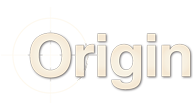That’s the reality echoed in a great discussion started by Mohammed Al-arnawoot, with contributions from both traditionalists like Desiree Villeneuve, P.ENG, CSWE and strong MBD advocates like Henk Jörg, who boldly shared that their company hasn’t used drawings in over a decade.
It’s a real-world debate, and the tension is valid.
2D drawings remain the dominant tool for quality checks, quoting, and communication, but they’re also the first thing to fall out of sync when CAD models evolve.
Every time a 3D model changes, the drawing becomes a liability.
😬 Tolerances must be re-updated
🥺 Dimensions re-aligned
🥵 Draftspeople re-engaged
🤢 And QC risks validating outdated data
We've all seen it: drawing revisions that lag behind the model, leading to confusion, rework, and costly delays.
That's why more forward-thinking teams are shifting to Model-Based Definition (MBD), where GD&T is embedded directly in the CAD model.
With this approach:
😊 Changes happen at the source
😀 There's no second disconnected workflow
☺️ Inspection and validation stay aligned with true design intent
At Origin International, we support this evolution with CheckMate for SOLIDWORKS + SoftFit, helping teams:
✅ Validate parts against CAD with GD&T intact
✅ Automatically generate inspection plans and reports
✅ Eliminate redundant drawing steps through model-native workflows
This isn’t just about going “paperless.”
It’s about clarity, accountability, and eliminating waste from design to inspection.
If you’ve ever been burned by a drawing that didn’t match the model, you already know why MBD matters.
I’d love to keep this conversation going:
What’s been your biggest challenge in making the shift to model-first thinking?
hashtag#MBD hashtag#ModelBasedDefinition hashtag#GDandT hashtag#DigitalThread hashtag#CheckMate hashtag#SOLIDWORKS hashtag#SmartManufacturing hashtag#QualityEngineering hashtag#ContinuousImprovement hashtag#MBE hashtag#ModelBasedEnterprise

